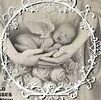
The clothing we choose to dress our loved ones in for their funerals, wakes and burials can make a difference when it comes to honoring them. With a little consideration for the deceased’s personal style, religious beliefs and other factors, you can find attire that makes their final journey graceful.
Burial gowns are garments that help the deceased look their best while in a casket and are often made of soft or satin-like materials. They’re available for men and women, and can be designed with a religious motif or even as a reversible dress that can show the deceased’s bare legs when they are lowered into the grave. Some designers, like Mark Mitchell of Seattle, use couture and heirloom sewing techniques to create one-of-a-kind custom burial outfits.
Some designers have also combined art and science, such as Pia Interlandi of Australia, whose Garments for the Grave collection uses water-soluble fibers to create clothes that are both beautiful and functional. Mitchell and Interlandi are both members of the Slow Fashion movement, which advocates for the sustainable use of fabric and slowing down production and consumption to reduce environmental impact.
In the 17th century, many women made their own burial gowns. They would lay out the dress they wanted to be buried in before going into labor, so that they would know what to wear if something went wrong and they died during childbirth. Today, many women who choose to buy burial outfits do so as a way to honor their spouse, children or parents.
For those who choose green or natural burials, the clothing they are buried in must be biodegradable and made from untreated and natural fibers such as cotton, wool or linen. These clothing guidelines are typically imposed by cemeteries and natural burial grounds due to environmental concerns.
Choosing the right clothing for your loved one may seem daunting at first. Many of the deceased’s normal clothing won’t fit them at the time of death due to rigor mortis and some may be inappropriate due to their religion or burial method. It is a good idea to check with your funeral home to see what their specific guidelines are for the deceased’s final clothing needs.
Beverly Duckett of Whittle Springs, Tennessee, sews her own tiny burial garments in her bright second-floor sewing room to provide comfort for families of infants who will never come home from the hospital. Her angel gown projects (along with diapers and knitted caps for the tiniest preemies) are a much-needed relief for moms and dads who are already mourning their lost babies.
Aside from the considerations of size and fabric, a lot depends on the deceased’s religion. In Islam, for example, the body must be washed and covered in a white sheet immediately after death. For Jewish people, the body is wrapped in simple shrouds known as tachrichim and topped with a tallit or prayer shawl. For Catholics, the standard clothing for viewing and funeral is a suit or formal dress.
